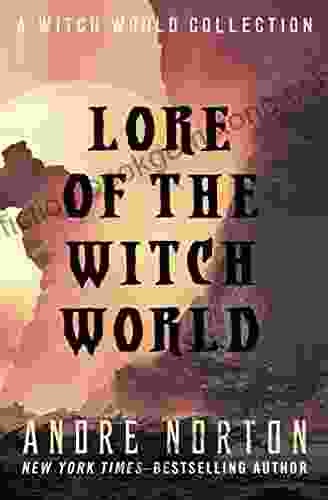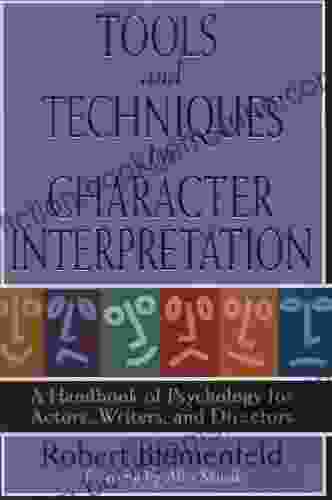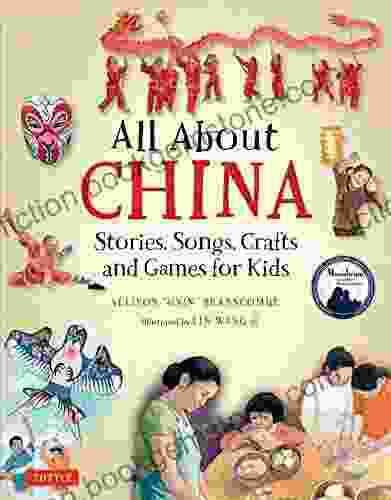Tools and Techniques for Character Interpretation: A Comprehensive Guide for In-Depth Understanding

Character interpretation is a fundamental aspect of literary analysis, enabling readers to delve into the depths of a narrative, understand the motivations and complexities of characters, and derive meaningful insights from the text. While interpreting characters can be a challenging yet rewarding endeavor, utilizing the appropriate tools and techniques can significantly enhance the process. This article provides a comprehensive guide to various tools and techniques that can assist in the effective interpretation of characters, fostering a deeper understanding of their nature, actions, and literary significance.
1. Character Analysis Chart
A character analysis chart is a valuable tool for systematically organizing and analyzing information about a character. It typically consists of several sections, including:
4.2 out of 5
| Language | : | English |
| File size | : | 4179 KB |
| Text-to-Speech | : | Enabled |
| Screen Reader | : | Supported |
| Word Wise | : | Enabled |
| Print length | : | 322 pages |
- Physical Appearance: Describe the character's physical attributes, including height, weight, facial features, clothing, and any other relevant physical details.
- Personality Traits: Identify and list the character's personality traits, both positive and negative. Include adjectives that accurately describe their behavior, motivations, and attitudes.
- Backstory: Summarize the character's history and background, including their upbringing, education, relationships, and any significant life events that have shaped their character.
- Relationships: Analyze the character's relationships with other characters in the story, exploring how these relationships influence their behavior and development.
- Motivations: Identify and explain the character's motivations, both internal (e.g., desires, fears) and external (e.g., societal pressures, environmental factors).
- Role in the Story: Discuss the character's role in the story, considering their contribution to the plot, conflict, and overall theme.
2. Reading Between the Lines
In addition to the explicit information provided in the text, it is essential to look for clues and interpretations "between the lines." Consider the following techniques:
- Subtext: Pay attention to what characters say and do, as well as what they don't say or do. Subtly implied meanings and unspoken thoughts can provide valuable insights into a character's true nature.
- Symbolism: Identify and interpret symbols associated with characters. These symbols can represent aspects of their personality, relationships, or inner struggles.
- Imagery: Analyze the language used to describe characters. Vivid imagery and sensory details can reveal hidden characteristics and emotions.
3. Characterization Methods
Authors employ various techniques to develop and reveal characters, including:
- Direct Characterization: The author explicitly describes the character's physical appearance, personality, and motivations.
- Indirect Characterization: The author reveals the character's traits through their actions, speech, thoughts, and relationships.
- Dramatic Characterization: The character's nature is primarily conveyed through their interactions and conversations with other characters.
- Stream of Consciousness: The author gives readers direct access to the character's inner thoughts and feelings, providing an intimate understanding of their psyche.
4. Character Archetypes
Character archetypes are commonly used in literature to represent universal human experiences and emotions. Understanding these archetypes can help readers connect with characters on a deeper level:
- The Hero: A courageous and selfless individual who embarks on a quest or mission to overcome obstacles.
- The Mentor: A wise and experienced guide who offers advice and support to the hero.
- The Trickster: A cunning and playful character who often uses deception to achieve their goals.
- The Shadow: A dark and malevolent figure that represents the hero's inner demons or repressed desires.
5. Character Development
Characters often undergo significant changes and developments throughout the course of a story. Analyzing character development involves tracking these changes and exploring their causes and consequences:
- Static Characters: Characters who remain essentially unchanged throughout the story.
- Dynamic Characters: Characters who experience significant transformations in their personality, beliefs, or values.
- Epiphany: A moment of sudden realization or enlightenment that leads to a profound change in a character's perspective or behavior.
- Anagnorisis: A moment of recognition or self-discovery that prompts a character to confront their true nature or past actions.
6. Character Motivation
Understanding character motivation is crucial for comprehending their actions and decisions. Consider these approaches:
- Psychological Motivation: Explore the character's inner desires, fears, and conflicts that drive their behavior.
- Social Motivation: Analyze how external factors, such as societal norms, cultural values, and peer pressure, influence character choices.
- Moral Motivation: Examine the character's ethical beliefs and principles that shape their actions.
7. Cultural and Historical Context
The cultural and historical context in which a story is set can significantly impact the interpretation of characters. Consider the following:
- Cultural Norms: Explore how societal values and expectations shape a character's behavior and motivations.
- Historical Events: Analyze how historical events and social movements influence the characters' experiences and decision-making.
- Social and Political Influences: Examine the impact of social hierarchies, power dynamics, and political ideologies on character development.
8. Authorial Intent
Authors often have specific intentions or messages that they convey through their characters. Consider the author's background, writing style, and literary devices used to gain insights into their purpose:
- Biography: Research the author's life experiences and motivations to understand the potential influences on character creation.
- Style: Analyze the author's writing style, including their use of language, imagery, and symbolism, to identify patterns and themes that may reveal character intentions.
- Literary Devices: Examine the use of literary devices, such as foreshadowing, irony, and symbolism, to uncover hidden meanings and authorial intent.
9. Collaborative Interpretation
Character interpretation is often subjective and open to multiple perspectives. Engaging in collaborative interpretation can enrich understanding:
- Discussion Groups: Participate in discussion groups to share insights, challenge interpretations, and gain alternative viewpoints.
- Online Forums: Engage in online forums dedicated to literary analysis to connect with other readers and exchange ideas.
- Literary Criticism: Read literary criticism to learn from the interpretations and perspectives of established scholars and critics.
10. Beyond the Text
Exploring adaptations and interpretations of the story beyond the original text can provide additional insights into characterization:
- Movie Adaptations: Analyze how directors and actors interpret and portray characters in film adaptations.
- Fan Fiction: Read fan fiction written by other readers to gain different perspectives on character motivation and development.
- Stage Productions: Attend stage productions to observe how characters are brought to life through live performances.
Character interpretation is a rich and multifaceted endeavor that requires a combination of keen observation, thoughtful analysis, and a willingness to engage with the text and its context. By utilizing the tools and techniques outlined in this article, readers can delve deeply into the hearts and minds of characters, unlocking their complexities, motivations, and literary significance. Through a comprehensive understanding of characters, we gain a deeper appreciation for the art of storytelling and the human experiences it portrays.
4.2 out of 5
| Language | : | English |
| File size | : | 4179 KB |
| Text-to-Speech | : | Enabled |
| Screen Reader | : | Supported |
| Word Wise | : | Enabled |
| Print length | : | 322 pages |
Do you want to contribute by writing guest posts on this blog?
Please contact us and send us a resume of previous articles that you have written.
 Best Book
Best Book Page Flip
Page Flip Bookshelf
Bookshelf Literary loom
Literary loom Chapter
Chapter Bookish
Bookish PageTurner
PageTurner Bibliophile
Bibliophile Story
Story Inkwell
Inkwell Bookworm
Bookworm Labyrinth
Labyrinth Plot Twist
Plot Twist Prose
Prose Paperback
Paperback Storyteller
Storyteller Sanctuary
Sanctuary Fiction
Fiction Reading
Reading Chronicle
Chronicle Read
Read Anders De La Motte
Anders De La Motte Alicia Hall
Alicia Hall Ana Victoria Calderon
Ana Victoria Calderon Amanda Leduc
Amanda Leduc Jeandre Gerber
Jeandre Gerber Rod Reynolds
Rod Reynolds Peter Schiessl
Peter Schiessl Beth Brown Reinsel
Beth Brown Reinsel Amanda B Cosgrove
Amanda B Cosgrove Kenneth E Hall
Kenneth E Hall America Ferrera
America Ferrera Justin Eisinger
Justin Eisinger Pauli Murray
Pauli Murray Robb Pearlman
Robb Pearlman Stan Grant
Stan Grant Amy Chavez
Amy Chavez Karine Jean Pierre
Karine Jean Pierre Robert Chick
Robert Chick Joyce Hicks
Joyce Hicks Margaret Winslow
Margaret Winslow Amaka Samrah Linus
Amaka Samrah Linus Amaryllis Fox
Amaryllis Fox Alison Weir
Alison Weir Murray Stewart
Murray Stewart George Puckett
George Puckett Dale Sattler
Dale Sattler Frances F Dunwell
Frances F Dunwell Amy Mckinley
Amy Mckinley Michael Pronko
Michael Pronko Paul Doty
Paul Doty M E Thorne
M E Thorne Tom Miller
Tom Miller Douglas Johnson
Douglas Johnson Rachel Rhys
Rachel Rhys Amihan Balasabas
Amihan Balasabas Bob Reynolds
Bob Reynolds Allan Neuwirth
Allan Neuwirth John Varley
John Varley Johanna Garton
Johanna Garton Ross Gay
Ross Gay Elmore Leonard
Elmore Leonard Ian Anderson
Ian Anderson Alexander Mackenzie
Alexander Mackenzie Stephen Michael Shearer
Stephen Michael Shearer Victor Villasenor
Victor Villasenor Marguerite Penrose
Marguerite Penrose W J Lundy
W J Lundy Robert Blumenfeld
Robert Blumenfeld Esi Edugyan
Esi Edugyan R D Brady
R D Brady Katrina Jackson
Katrina Jackson Alexandra Garbarini
Alexandra Garbarini Alistair Maclean
Alistair Maclean Joshua Jelly Schapiro
Joshua Jelly Schapiro Lance Richardson
Lance Richardson Guy Wann
Guy Wann Masa Seikou
Masa Seikou William D Crump
William D Crump Parker J Cole
Parker J Cole International Learning Academy
International Learning Academy Ronald Florence
Ronald Florence Michael V Hayden
Michael V Hayden Studio Atelier 21
Studio Atelier 21 James Rollins
James Rollins Stephen Mason
Stephen Mason Ali Duffy
Ali Duffy Jamie Ibson
Jamie Ibson Fay Simpson
Fay Simpson Karin Tidbeck
Karin Tidbeck Tessa Dare
Tessa Dare Duncan M Hamilton
Duncan M Hamilton Kenneth Cline
Kenneth Cline Christine Chitnis
Christine Chitnis Rabindranath Tagore
Rabindranath Tagore Hazel V Carby
Hazel V Carby Alwyn Crawshaw
Alwyn Crawshaw Amanda Bouchet
Amanda Bouchet Nancy Jooyoun Kim
Nancy Jooyoun Kim Lianne Dillsworth
Lianne Dillsworth Jan Dalley
Jan Dalley Amanda J Spedding
Amanda J Spedding Alun Anderson
Alun Anderson Anchee Min
Anchee Min Alison Freer
Alison Freer Carol Belanger Grafton
Carol Belanger Grafton Tracy Osborn
Tracy Osborn David Larson
David Larson Emily Ratajkowski
Emily Ratajkowski Glyn Macey
Glyn Macey Kenji Yoshino
Kenji Yoshino Alexander Weinstein
Alexander Weinstein Hitomi Shida
Hitomi Shida Amber Easby
Amber Easby Alexander Sergeant
Alexander Sergeant Steven Howell
Steven Howell Winifred Aldrich
Winifred Aldrich Meredith Hall
Meredith Hall Simon Goldhill
Simon Goldhill Martin Gayford
Martin Gayford Phil Huddleston
Phil Huddleston Ronni L Gordon
Ronni L Gordon Sharon Lee
Sharon Lee Cap Daniels
Cap Daniels Ammianus Marcellinus
Ammianus Marcellinus Eric Flint
Eric Flint Margery Leveen Sher
Margery Leveen Sher Casey Watson
Casey Watson Alyson Belle
Alyson Belle Alexandra Silber
Alexandra Silber Chanel Cleeton
Chanel Cleeton Amanda Barnes
Amanda Barnes Peter L Winkler
Peter L Winkler Mark De Silva
Mark De Silva Helen Mcginn
Helen Mcginn Liza Gershman
Liza Gershman Jonathan Gardiner
Jonathan Gardiner Alfred Gell
Alfred Gell Sachiko Toyozato
Sachiko Toyozato Lauren Wilkinson
Lauren Wilkinson Tiye Love
Tiye Love Peter Bacho
Peter Bacho Thomas Hope
Thomas Hope Theresa Goodrich
Theresa Goodrich Kimberly Brown
Kimberly Brown Jenny Handy
Jenny Handy Alice Wong
Alice Wong Allie Allen
Allie Allen Wolfedale Press
Wolfedale Press Tiffani Goff
Tiffani Goff Alia Thabit
Alia Thabit Jennifer Saginor
Jennifer Saginor Hunter Biden
Hunter Biden Thomas Powers
Thomas Powers Eva Taylor
Eva Taylor Alfred Hitchcock
Alfred Hitchcock Minerva Peters
Minerva Peters Alicia Malone
Alicia Malone Suzie Mackenzie
Suzie Mackenzie Peter Cronin
Peter Cronin Peter Egan
Peter Egan Seth Emerson
Seth Emerson Pamela Spiro Wagner
Pamela Spiro Wagner John Bester
John Bester Amy Odell
Amy Odell Maureen Paton
Maureen Paton Amber Brock
Amber Brock Yolanda Lopez
Yolanda Lopez Andrea Coke
Andrea Coke Christie Golden
Christie Golden Kenny Roy
Kenny Roy Susan Elizabeth Phillips
Susan Elizabeth Phillips Jade Blue
Jade Blue Grahame Booth
Grahame Booth Allan Zola Kronzek
Allan Zola Kronzek Alma Nilsson
Alma Nilsson Sherilyn Connelly
Sherilyn Connelly Alexandre Roger
Alexandre Roger W E B Griffin
W E B Griffin Charles Evans
Charles Evans L A Braun
L A Braun Bill Yenne
Bill Yenne Cormac Mccarthy
Cormac Mccarthy Hisham Matar
Hisham Matar Amanda Grange
Amanda Grange Amber Ruffin
Amber Ruffin Grace M Cho
Grace M Cho Alida Nugent
Alida Nugent Alicia Beckton
Alicia Beckton Allegra Kent
Allegra Kent Alina Wheeler
Alina Wheeler Ashley Niedringhaus
Ashley Niedringhaus Rana Mitter
Rana Mitter Barbara Hambly
Barbara Hambly Paul Tremblay
Paul Tremblay Francis A Schaeffer
Francis A Schaeffer Arlo Quinn
Arlo Quinn Terry Gilliam
Terry Gilliam Alphonso Brown
Alphonso Brown Eve Vaughn
Eve Vaughn Kevin Hearne
Kevin Hearne Iwao Takamoto
Iwao Takamoto Mz Lady P
Mz Lady P Stephen Birmingham
Stephen Birmingham Alexandra Shulman
Alexandra Shulman Amir Eshel
Amir Eshel Christina Ezrahi
Christina Ezrahi Amy B Scher
Amy B Scher Lisa Pietsch
Lisa Pietsch Alexandra Fuller
Alexandra Fuller Anne M Scott
Anne M Scott Samira Shackle
Samira Shackle John Jackson Miller
John Jackson Miller John H Cunningham
John H Cunningham Amanda Brooks
Amanda Brooks Mark Edlitz
Mark Edlitz Amelia Pang
Amelia Pang I O Adler
I O Adler Colleen Hoover
Colleen Hoover Laura Dave
Laura Dave Amy Kuivalainen
Amy Kuivalainen Karen Falk
Karen Falk Alvaro Castagnet
Alvaro Castagnet David Bergsland
David Bergsland Allan Kaster
Allan Kaster Margaret Bunson
Margaret Bunson Charles Martin
Charles Martin Peter Lane
Peter Lane Alexander Von Humboldt
Alexander Von Humboldt Rudy Wiebe
Rudy Wiebe Hans Ulrich Obrist
Hans Ulrich Obrist Rukmini Vijayakumar
Rukmini Vijayakumar Aline Ash
Aline Ash Alice Hoffman
Alice Hoffman K Gorman
K Gorman Lucia Peters
Lucia Peters Gerry Souter
Gerry Souter Tim Rock
Tim Rock Alfred Habegger
Alfred Habegger Ma Jian
Ma Jian Allison Markin Powell
Allison Markin Powell Michael D Pitt
Michael D Pitt Gordon K Hirabayashi
Gordon K Hirabayashi Anna Mason
Anna Mason Bill Zarchy
Bill Zarchy Michelle Elaine
Michelle Elaine Yoshiko Uchida
Yoshiko Uchida Brad Prager
Brad Prager Kimberly Chrisman Campbell
Kimberly Chrisman Campbell Hazel Soan
Hazel Soan Sally K May
Sally K May Allen Rucker
Allen Rucker Alice Procter
Alice Procter Eleanor Roosevelt
Eleanor Roosevelt Alyssa Campbell
Alyssa Campbell Steven Awalt
Steven Awalt Helen Freeman
Helen Freeman E M Foner
E M Foner Johannes Vloothuis
Johannes Vloothuis Chris Peterson
Chris Peterson Amanda Vaill
Amanda Vaill Amira Hass
Amira Hass Alyona Nickelsen
Alyona Nickelsen Dov S S Simens
Dov S S Simens Harriet Denison
Harriet Denison Alison King
Alison King Amor Fenn
Amor Fenn Christopher Golden
Christopher Golden Amelia Jones
Amelia Jones Alexis Schlegel
Alexis Schlegel Krista Luna
Krista Luna Bethany Robertson
Bethany Robertson Terry Mcmillan
Terry Mcmillan Dave Jay
Dave Jay Alexander Speltz
Alexander Speltz Anna Viroubova
Anna Viroubova L Smith
L Smith Vijay Kumar
Vijay Kumar Kathryn Cramer
Kathryn Cramer Alfred Russel Wallace
Alfred Russel Wallace Tom Heintjes
Tom Heintjes Kevin Steverson
Kevin Steverson Montana Hodges
Montana Hodges Kimberly Adams
Kimberly Adams T E Bakutis
T E Bakutis Alyssa Shelasky
Alyssa Shelasky Patrick Devaney
Patrick Devaney Andra Bucci
Andra Bucci Alistair Mcguinness
Alistair Mcguinness Lydia Sloan Cline
Lydia Sloan Cline Allison Murray
Allison Murray Deidre M Pike
Deidre M Pike J A Konrath
J A Konrath Christopher Bolton
Christopher Bolton Andrew Gillsmith
Andrew Gillsmith Faya Causey
Faya Causey Raul Caceres M D
Raul Caceres M D Erik Weihenmayer
Erik Weihenmayer Oleg Atbashian
Oleg Atbashian Levi Zelkind
Levi Zelkind Mike Fu
Mike Fu Navid Kermani
Navid Kermani Bern Will Brown
Bern Will Brown Allison Brennan
Allison Brennan Allison Branscombe
Allison Branscombe Rosi Jarussi
Rosi Jarussi Alexey Osadchuk
Alexey Osadchuk Aliette De Bodard
Aliette De Bodard Emily Grabatin
Emily Grabatin Alison Lumbatis
Alison Lumbatis Nicole Lynn
Nicole Lynn Burne Hogarth
Burne Hogarth Attica Locke
Attica Locke C Vann Woodward
C Vann Woodward Anand Prahlad
Anand Prahlad Jeff Chenault
Jeff Chenault Ali Dowlatshahi
Ali Dowlatshahi Edd Staton
Edd Staton Dreamstorm Publications
Dreamstorm Publications Jessi Klein
Jessi Klein Arlen Gargagliano
Arlen Gargagliano Jerry Pournelle
Jerry Pournelle John Steinbeck
John Steinbeck Alexandra Sokoloff
Alexandra Sokoloff Elizabeth Taylor
Elizabeth Taylor Brandon Sanderson
Brandon Sanderson Brynne Asher
Brynne Asher Amanda Kuster
Amanda Kuster Alison Ross
Alison Ross Alexander Frater
Alexander Frater Robert J Sawyer
Robert J Sawyer Amy M Davis
Amy M Davis Laquette
Laquette Dianne Duvall
Dianne Duvall Maxwell Ayrton
Maxwell Ayrton Jessica Fishman
Jessica Fishman Kindle Edition
Kindle Edition Will Dodson
Will Dodson Theresa Weir
Theresa Weir Dee Brown
Dee Brown E J Fleming
E J Fleming Kate Field
Kate Field Elamin Abdelmahmoud
Elamin Abdelmahmoud Kingsley M Bray
Kingsley M Bray Lindsay Ellis
Lindsay Ellis Richard Bell
Richard Bell Ali Bey
Ali Bey Leticia Ordaz
Leticia Ordaz Aminah Smith
Aminah Smith Anthony Galvin
Anthony Galvin Derek Pardue
Derek Pardue Alexander H Rosenberg
Alexander H Rosenberg Amy Butler
Amy Butler Raine Thomas
Raine Thomas Reese Patton
Reese Patton Gabriella Catalano
Gabriella Catalano Jo Weldon
Jo Weldon G Michael Dobbs
G Michael Dobbs Chris Vines
Chris Vines Robyn Davidson
Robyn Davidson G P Hudson
G P Hudson Ly Tran
Ly Tran Allison Alexander
Allison Alexander M Gaspary
M Gaspary Alexander Monro
Alexander Monro Emily Crafts
Emily Crafts Grayson Sinclair
Grayson Sinclair Lan Sluder
Lan Sluder Christopher Lee Philips
Christopher Lee Philips Amaya Black
Amaya Black Alice Walker
Alice Walker Rysa Walker
Rysa Walker Alexandra Warren
Alexandra Warren Christopher Finch
Christopher Finch Karrine Steffans
Karrine Steffans Boye Lafayette De Mente
Boye Lafayette De Mente Amanda Milo
Amanda Milo Richard Price
Richard Price Sidney Huntington
Sidney Huntington Allan Ira Bass
Allan Ira Bass Megan Massacre
Megan Massacre Alois Senefelder
Alois Senefelder Christopher Hopper
Christopher Hopper Kayla Allen
Kayla Allen M M Kaye
M M Kaye Jeff A Menges
Jeff A Menges Jason Vachon
Jason Vachon J N Chaney
J N Chaney Clary Illian
Clary Illian Andie Powers
Andie Powers Amy Poehler
Amy Poehler Nickey Knighton
Nickey Knighton Lan Yan
Lan Yan Jared Mandani
Jared Mandani Gini Koch
Gini Koch Allan A Macfarlan
Allan A Macfarlan Alison Lee
Alison Lee Jeff Greenwald
Jeff Greenwald Alistair Moffat
Alistair Moffat Anand Pandian
Anand Pandian Alice Albinia
Alice Albinia Alice Henderson
Alice Henderson Amy S F Lutz
Amy S F Lutz Bill Cunningham
Bill Cunningham Amanda Hislop
Amanda Hislop William C Dietz
William C Dietz Amit Offir
Amit Offir Amanda Vanever
Amanda Vanever Margaret B Blackman
Margaret B Blackman Allan Haley
Allan Haley Alexandria House
Alexandria House Matthew Gabriele
Matthew Gabriele Andre Norton
Andre Norton Simon J Hall
Simon J Hall Paul Adams
Paul Adams Allan R Ellenberger
Allan R Ellenberger Bruce Larson
Bruce Larson Alexander Armstrong
Alexander Armstrong Amy Burkert
Amy Burkert Jesse Fox
Jesse Fox Joshua Jay
Joshua Jay Vito Adriaensens
Vito Adriaensens Amin Maalouf
Amin Maalouf William Bennet Stevenson
William Bennet Stevenson Lalita Tademy
Lalita Tademy Alyn Shipton
Alyn Shipton Warren Kozak
Warren Kozak Dara Mcanulty
Dara Mcanulty Jade Asikiwe
Jade Asikiwe Alexander Bennett
Alexander Bennett Thomas Sanchez
Thomas Sanchez Alfred Bester
Alfred Bester Robert K Massie
Robert K Massie Terry Schott
Terry Schott Robert Pringle
Robert Pringle Nigel Randell
Nigel Randell Jesmyn Ward
Jesmyn Ward Jim Stott
Jim Stott Patricia Konczynski Jennifer Herbst
Patricia Konczynski Jennifer Herbst Andre Gonzalez
Andre Gonzalez Rahna Reiko Rizzuto
Rahna Reiko Rizzuto Johan Huizinga
Johan Huizinga Bas Bakker
Bas Bakker Ortrun Egelkraut
Ortrun Egelkraut Allison Hong Merrill
Allison Hong Merrill Calum Waddell
Calum Waddell Julia Quinn
Julia Quinn Michael Powell
Michael Powell
Light bulbAdvertise smarter! Our strategic ad space ensures maximum exposure. Reserve your spot today!

 Kenneth ParkerWhere the Line Bleeds: A Dystopian Saga that Blurs the Boundaries of Morality...
Kenneth ParkerWhere the Line Bleeds: A Dystopian Saga that Blurs the Boundaries of Morality... F. Scott FitzgeraldFollow ·7k
F. Scott FitzgeraldFollow ·7k Richard AdamsFollow ·18.3k
Richard AdamsFollow ·18.3k Oscar BellFollow ·6k
Oscar BellFollow ·6k Chad PriceFollow ·8.3k
Chad PriceFollow ·8.3k Arthur Conan DoyleFollow ·13.4k
Arthur Conan DoyleFollow ·13.4k Edward BellFollow ·2.9k
Edward BellFollow ·2.9k Greg FosterFollow ·11.1k
Greg FosterFollow ·11.1k Junot DíazFollow ·19.7k
Junot DíazFollow ·19.7k

 Kyle Powell
Kyle PowellThe Enchanting Realms of Witch World: A Collector's Guide...
In the vast and...

 Ethan Mitchell
Ethan MitchellSwap Night on Union Station EarthCent Ambassador 19: A...
On a crisp autumn evening in the...

 Gage Hayes
Gage HayesThe Last Reaper: A Military SciFi Epic That Will Leave...
The Last Reaper...

 Christopher Woods
Christopher WoodsUnveiling the Masterpiece: The Original Pattern Bible by...
In the realm of pattern design, there...

 William Golding
William GoldingDiscover the Unfathomable Con Living Earthcent Universe:...
An Expansive Cosmic Tapestry In the...
4.2 out of 5
| Language | : | English |
| File size | : | 4179 KB |
| Text-to-Speech | : | Enabled |
| Screen Reader | : | Supported |
| Word Wise | : | Enabled |
| Print length | : | 322 pages |










